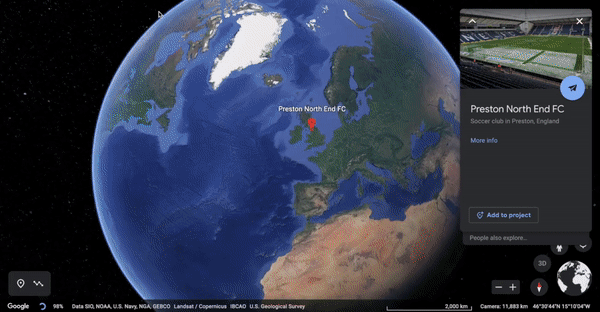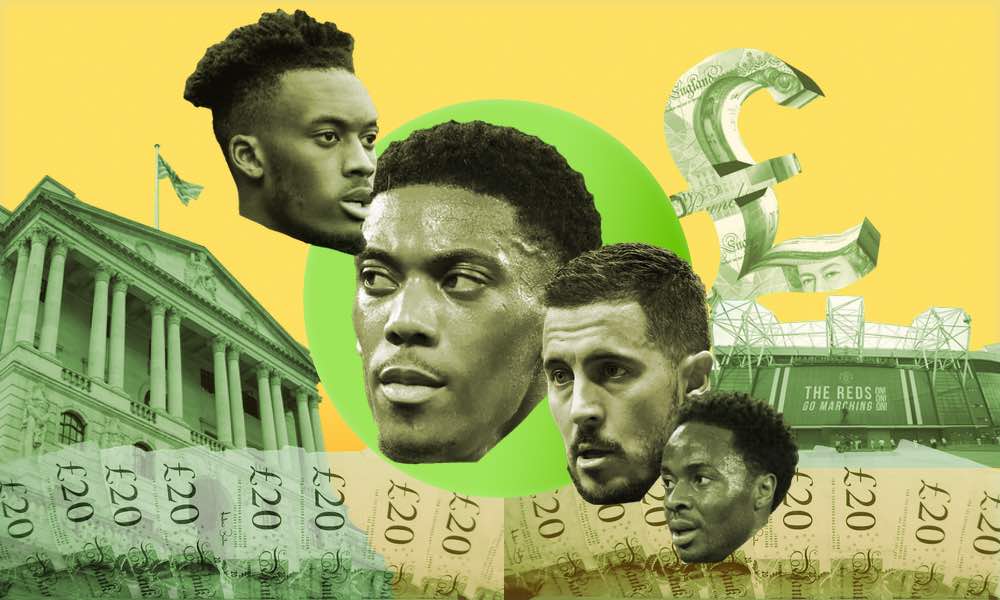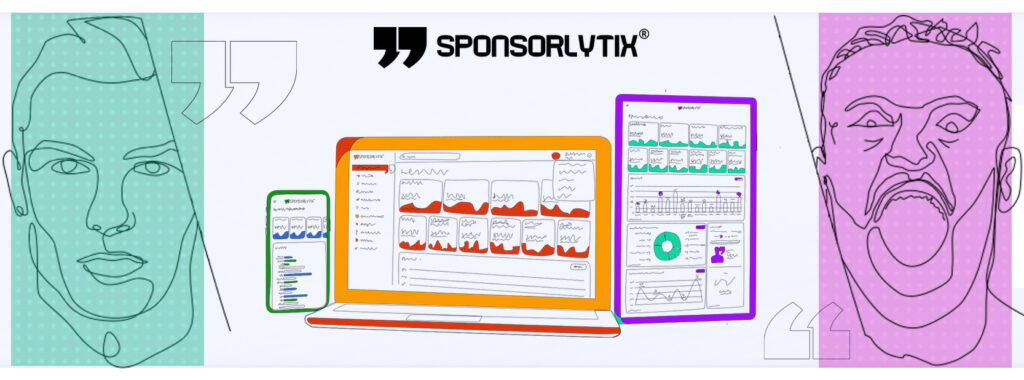|
Listen to this Article (Audio)
|
powered by
Mediocrity, especially at the highest level of football, is extremely costly and damaging. Overpaid and entitled footballers, particularly in the English Premier League, where player salaries are significantly inflated, contribute to this complicated matter. This issue extends to other top European leagues, but for the purpose of this article, we will focus on the Premier League and English football.
The top clubs aim to compete for the league title or secure a top-four finish, which allows them to compete in European competitions such as the Champions League, FIFA Club World Cup, and Super Cups. Other clubs may simply strive to qualify for the Champions League or avoid relegation/achieve promotion to the Premier League, which generates significant TV rights revenue for UK football clubs (around £150m per season for each of the 20 clubs).
There is a scarcity of high-quality players, which leads to a competitive market where clubs try to persuade available talent to choose them by offering attractive pay packages. However, this often leads to an inflation of salaries, which creates a problematic cycle where salaries continue to rise without any decrease. This pattern is similar to the player transfer market, where prices tend to increase over time.
This raises th e question: where will it all end? Football clubs are increasingly taking on debt, with their finances moving into the red and the risk of administration or defaulting on annual payments (with interest) growing every year. In the worst-case scenario, clubs could face administration.
e question: where will it all end? Football clubs are increasingly taking on debt, with their finances moving into the red and the risk of administration or defaulting on annual payments (with interest) growing every year. In the worst-case scenario, clubs could face administration.
The mighty Barcelona, one of the biggest sports clubs in the world, came close to administration a few months ago with over £1.15 billion in debt, which sent shockwaves throughout the football world. Without President Joan Laporta’s efforts to sell valuable stakes in the club’s TV rights (using three economic levers) and secure a £266m stadium naming rights sponsorship deal with Spotify, Barcelona may have gone bankrupt. It is surreal to think about the potential consequences of this situation.
![]()
The ‘levers’ were exceptional measures during an exceptional period that required bravery and audacity to reverse the Club’s financial and sporting situation
FC Barcelona President Joan Laporta
The issue of footballers taking advantage of their contracts by overstaying their welcome and refusing to leave clubs when asked has become a matter of concern. In order to address this issue, clauses need to be added to players’ contracts that allow clubs to cancel contracts or cut pay if performances are below par or if players are “injured” for extended periods of time due to lack of effort in recovery.
Legally, there is currently no protection for clubs in this situation, but there are insurance policies covering players with long-term injuries.
Over 80 British and European football clubs, as well as professional footballer unions like FIFPro and The PFA, were approached by The Sports Journal to discuss this important issue. However, due to the sensitivity of the topic, not a single club was willing to comment on player salaries or the topic in general on an official capacity.


Source: The Sports Journal investigation
The Sports Journal visited several clubs in the UK, from the Premier League to the Championship to the 4th, 5th, and 6th divisions, to speak with officials about the soaring player wage bills. The Journal also reached out to additional clubs via phone and email. The situation in the lower divisions was described as “extremely tough to say the least”.
Many football clubs responded and politely declined to comment, while others did not respond at all. However, The Sports Journal was able to exclusively speak with a few football clubs’ sports and financial directors in the UK (including Wales and Scotland), Spain, Germany, Italy, and France. Some of these interviews were off the record, and some were anonymous, as the directors did not wish to be named and create an environment of distress within their clubs and dressing rooms.
Source: The Sports Journal investigation
![]()
Since the pandemic hit, football clubs have lost a significant amount of revenue from matchday tickets and hospitality, merchandise, and sponsorships. While the top clubs will likely survive and even thrive, smaller clubs that are not global brands or do not enjoy wide national or internal support may struggle to compete. The effects of the pandemic have made it difficult for these clubs to pay bills, player salaries, and other expenses, and the situation has become a matter of survival. Football clubs are important for many communities and are considered historic symbols, but the lower one goes in the football pyramid, the more difficult it becomes to survive.
Sports Director of a Championship Club, who chose to remain anonymous
This investigation aims to shed light on the struggles that football clubs face in today’s economic conditions. While there is significant protection available for players, the same cannot be said for clubs.
Football clubs bring cultural and historical significance to their cities or towns and are an important part of their communities. They deserve more protection and should not be ostracized at every opportunity.

Old Trafford Stadium (Manchester United) birds eye view | Source: Google Earth

As an example, consider Gareth Bale. He was an absolutely fantastic player in his first few seasons at Real Madrid and won five Champions League titles (two of them in seasons where he did not feature much due to the issue of being asked for a transfer by Real Madrid). When the club asked his agent to find him a new club because they wanted to “move on”, Bale knew that no other club in the world would offer him wages of £600k per week.
So, he refused to leave and decided to sit on the bench for three years to run out his contract, put the money in the bank, and then bounce. This is just one high profile example, there are hundreds of examples along similar lines. This situation illustrates the need for clauses in players’ contracts that allow clubs to cancel contracts or cut pay in certain circumstances.
Football clubs need more protection from lazy, entitled, inconsistent, and overpaid mediocre footballers who refuse to leave and move on, even when they are injured or underperforming (players do occasionally get injured, that is part of the job). This behaviour would not be tolerated in any corporate workplace, so why is it widely accepted in football?
There are players like Phil Jones at Manchester United, who has been injured for four years and is still on the club’s payroll earning £75,000 per week. Anthony Martial has never managed to stay injury-free for more than two months, has had poor performances consistently and sent out on loan since joining the club, and earns £250,000 per week.
This is a money heist worse than Floyd Mayweather’s recent YouTube boxing exhibitions. Clubs need more protection from players who take advantage of their contracts in this way.
Speaking to the editor-in-chief of Diario AS and the host of El Chiringuito TV in Spain, Tomas Roncero, believes that players are indeed overpaid.
![]()
Yes. Salaries are excessive regardless of the duration of the current economic situation. It already happened with Bale, who was the highest paid in the squad in his last two seasons despite playing very few games. Salaries of footballers are not in sync with the realities.
Another example is Calum Hudson-Odoi at Chelsea, who is earning £125,000 per week but cannot even make the matchday squad, let alone the bench. He was only shipped out on loan this summer. This is another example of the need for clauses in players’ contracts that allow clubs to cancel contracts or a pay cut in certain circumstances. Players who consistently underperform or are frequently injured should not be able to take advantage of the clubs in this way.

Molineux Stadium (Wolverhampton Wanderers) birds eye view | Source: Google Earth
So let’s break down the numbers, as without real facts, everything is an opinion or just a feeling and as we all know, facts don’t care about feelings.
To demonstrate that footballers are excessively overpaid, with some earning more than others, and how this is adversely affecting the finances and balance sheets of football clubs, we compiled lists of the current players’ payrolls for the 20 Premier League clubs.
We also included data on each club’s revenues and expenditures, provided by our friends at Sponsorlytix, to put the payroll numbers into context.
Source: FIFA, UEFA, England FA, HMRC, Sponsorlytix
You may argue that footballers are not overpaid because their salaries reflect the supply and demand in the market, or that football clubs can afford their high salaries because they generate vast amounts of revenue. You may also argue that the players are compensated reasonably given the rarity of their skills and the amount of money they bring in.
But consider why fans love athletes: they follow their dreams and do not take the traditional corporate job path. Who wouldn’t want to play in front of 80,000 fans weekly, be cheered on by millions of viewers on TV, be featured in the news, and have millions of followers on social media? It’s a dream job, isn’t it? And with the potential for multi-million dollar sponsorship and brand deals, what more could you need in life?
It is easy to fall into the trap of thinking that footballers are untouchable and bring a lot of value to their clubs, and that they are special specimens of humanity with genius skills (ok Messi may be touched by God). But not all footballers are like this. There are players who are overpaid, lazy, constantly injured, and damaging their clubs’ finances. These players are not deserving of their high salaries.
Of course, there are exceptions to every rule, and the same is true in football. Players like Cristiano Ronaldo, Lionel Messi, Kylian Mbappe, Neymar, and Erling Haaland are some of the players who truly deserve their weekly wages.
In this age of social revolution, one of the four revenue pipelines for football clubs is sponsorships. The value of a club’s sponsorship placement directly correlates with how much engagement and exposure they can generate for the sponsor through various assets such as TV broadcast, social media, news media, esports and gaming, and so on.
According to George Galloway, the former British Member of Parliament and current leader of the Workers Party in the UK, there is a significant gap between the grassroots and elite levels of the football ecosystem. Galloway, who has a deep understanding of the global monetary system, believes that this gap is detrimental to the sport.
![]()
The stat of the year for me was that Cristiano Ronaldo last season was paid £770k per week by my own team Manchester United. And complained when this was cut to £550k upon failure to secure a place in the Champions League. A failure he then used via agents to seek an exit from his lucrative contract.
 Now you could say that CR7 is more comparable to Elvis negotiating a fee to perform for a season in Vegas (though even Late Stage Elvis would’ve been embarrassed to perform as poorly as Ronaldo this
Now you could say that CR7 is more comparable to Elvis negotiating a fee to perform for a season in Vegas (though even Late Stage Elvis would’ve been embarrassed to perform as poorly as Ronaldo this
season) but what of others? Could Antony Martial hold down a centre stage at Vegas? Or Lingard at Forest? Yet both are on show-business wages entirely unconnected to the quality of their performances – when they even show-up! And if a performer came on stage with the hard-done-by body language of those two they’d be booed off by the folks who’d paid through the nose for tickets!
All three of my sons are potential professional footballers so you may think I’m shooting them in the foot here. But in truth I believe the love of money is the root of all evil. I grew up in a era where you might meet your football heroes on the bus and they certainly didn’t earn that much more than your father. Now they can earn two millions in a month. And not show much for it.
The billions trapped in the top echelons of the game should be paying for the development for the game amongst the millions at the grass roots which continue to wither and die for the want of resources. Not just for the sake of football but for the sake of a lost generation of youth.

Edgeley Park (Stockport County) birds eye view | Source: Google Earth
Cristiano Ronaldo, the most followed individual on Instagram with over half a billion followers and a total of about 780 million social media followers, has the power to open up a presence for any sponsor or brand in any territory around the world through a single social media post. When Ronaldo posts about training or an image from a match day, it generates  more Earned Media Value and Brand Value for Manchester United’s top sponsors (usually the shirt and sleeve sponsors) than all of the other 22 Manchester United players combined. (Ronaldo has announced that he has signed for Saudi Pro League club, Al Nassr, after mutually agreeing to leave Manchester United just before the 2022 Qatar World Cup. The Instagram followers of Al Nassr before the announcement was 978k, it currently stands at 4.8 million)
more Earned Media Value and Brand Value for Manchester United’s top sponsors (usually the shirt and sleeve sponsors) than all of the other 22 Manchester United players combined. (Ronaldo has announced that he has signed for Saudi Pro League club, Al Nassr, after mutually agreeing to leave Manchester United just before the 2022 Qatar World Cup. The Instagram followers of Al Nassr before the announcement was 978k, it currently stands at 4.8 million)
This increased EMV and BV for Manchester United’s sponsors solidifies their relationship with the club, justifies the multi-millions they pay each year, and even puts them in a better position to negotiate a better sponsorship contract if they wish to continue beyond the current term.
The global viewership of Manchester United games has also increased by 21% since Ronaldo joined the club, further boosting the EMV and BV that the club generates for its sponsors. The same effect has happened for Lionel Messi when he joined PSG.
Since Ronaldo joined Manchester United, the club sold 2.55 million units of shirts last season, (thats 750,000 more units compared to the previous season). Clubs typically only receive 7.5% of the commission on the sale of products like replica jerseys and training wear merchandise. Adidas, the kit supplier sponsor of Manchester United, pays the club £75 million each year. Because of Ronaldo, Adidas generated £191 million from replica jersey sales alone last season.
Source: Sponsorlytix
So does Ronaldo justify his £525k weekly salary at Manchester United? Yes, he does, not just on the pitch but off of it as well. However, players like Raheem Sterling, who was only Chelsea’s third choice this summer (after Ousman Dembele and Raphina), earn a salary of £325k a week, the highest earner at Chelsea. Sterling does not command the same level of commercial value off the pitch for Chelsea’s four revenue pipelines, and his on-pitch performances have been average at best.
These are the powerful effects that players like Cristiano Ronaldo and Lionel Messi can bring to a football club. They are the exceptions to the rule. All other players do not command the same level of power and influence.
Former Professional Player Welfare Manager Megon Hession, who has managed several Premier League footballers including Shawn Wright-Philips and Robert Green, does not believe that footballers are overpaid.
![]()
I don’t think Premiership footballers are overpaid. Arguably, football is the most popular sport on Earth. As with any elite athlete, these players will get what the market is willing to pay. Phenomenal footballers are in short demand so their market value goes through the roof. This is Economics 101.
As we now have a fair amount of American consortium owners, let’s compare just the gameplay in the EPL to American sports. The NFL plays 16 games a season to the Premiership’s 38 and the wages (not including bonus’ & endorsements) and time in the leagues are similar. It’s rare to hear American’s call athlete wages ‘immoral’. Vastly wealthy owners have invested in their franchises to produce great entertainment probably much to the chagrin of footballing purists.
Football isn’t a sport anymore, it’s entertainment. The clubs with the most success will have more TV rights, sponsorship money, merchandise sales, etc. The Clubs will pay their players as such for the best results. People are annoyed by this b/c regardless of the result, or injury, the footballer will be paid the same wages whereas other athletes are on prize money. Any lack of achievement or financial jeopardy related to performance annoys people.
Megon Hession, Player Welfare Manager

Blundell Park (Grimsby Town) birds eye view | Source: Google Earth
So lets jump into the numbers.
Football clubs monetize their brand through four income sources under the Commercial revenue sector [Combined complete data breakdown of the below income & expenditure are viewable by clicking each dataset name]:
- Sponsorship
- Matchday Revenue
- TV Rights Distribution
- Retail, Merchandising, Clothing & Product Licensing
And here is how football clubs spread their expenditure:
- Player Payroll
- Player Transfers
- Executive Staff Payroll
- Debt Payments
- Agent Fees
- Marketing Costs
- Transportation costs
- Stadium Costs

We have broken down the four revenue streams and eight expenditure areas of each of the current 20 Premier League clubs to provide perspective on how player payroll is the highest expenditure area for each club. We have also listed the salaries of every football player in the Premier League. [Each club’s complete data breakdown is viewable by clicking the names of the club in the below Table chart]
Lets take an overview look at all the Premier League clubs’ total revenue and expenditure and total debt.
Premier League Football Clubs Revenue vs Expenditure 2022
| Club | Revenue | Expenditure | Net | Total Debt | |
| Manchester City | £625.24m | £273.87m | £351.37m | £473m | |
| Liverpool | £591.48m | £256.8m | £334.68m | £268m | |
| Arsenal | £424.43m | £267.23m | £152.2m | £218m | |
| Brighton & Hove Albion | £227.11m | £75.57m | £151.54m | £306m | |
| Leicester City | £244.91m | £116.26m | £128.65m | £219m | |
| Leeds United | £141.29m | £47.47m | £93.82m | £49.1m | |
| AFC Bournemouth | £120.21m | £43.63m | £76.58m | £60.1m | |
| Brentford | £136.77m | £75.06m | £61.71m | £74m | |
| Crystal Palace | £157.22m | £97.21m | £60.01m | £84m | |
| Everton | £172.59m | £129.29m | £43.3m | £409m | |
| Aston Villa | £176.08m | £136.74m | £39.34m | £0 | |
| Fulham | £135.89m | £114.56m | £21.33m | £236m | |
| Manchester United | £582.81m | £573.06m | £9.75m | £530.2m | |
| Chelsea | £520.16m | £513.63m | £6.53m | £0 | |
| Southampton | £145.84m | £144.68m | £1.16m | £92.6m | |
| Wolverhampton Wanderers | £144.8m | £155.97m | -£11.17m | £152m | |
| Tottenham Hotspur | £326.16m | £339.24m | -£13.08m | £706m | |
| Newcastle United | £206.06m | £223.34m | -£17.28m | £0 | |
| West Ham United | £218.66m | £257.75m | -£39.09m | £120m | |
| Nottingham Forrest | £117.92m | £187.82m | -£69.9m | £34m |
Source: FIFA, UEFA, England FA, HMRC, Ofgem, Sponsorlytix
Football clubs at the highest level, particularly in the English Premier League, do generate a lot of revenue. However, running a football club is extremely expensive due to its competitive nature and the risk of relegation or not making the top four, which can lead to debt.
Debt and football clubs often go hand in hand. However, there are many different types of debt, ranging from alarming to strategic leverage. For example, Barcelona owes around £1.1 billion in total debt, a quarter of which is classified as “short-term” and must be repaid within a year.
The Catalan club’s short-term debt is double that of Manchester United, which has the highest short-term debt in the Premier League and is the biggest in all of Europe. Thats what you would call, alarming debt.
Tottenham currently has £706 million in debt on their books, which they have until 2042 to repay. The north London club took out a loan to pay for the construction of their new stadium, and the additional matchday income should more than cover the interest costs while also increasing the club’s worth. Thats what you would call, strategic leverage debt.
This type of debt is considered a low-risk investment for banks. On one side, you have clubs like Chelsea, Newcastle United, and Aston Villa that have no debt on their books. On the other side, you have Manchester United, which has £530.2 million in debt, which is considered a high-risk investment for banks and has to pay between £21.2 million and upwards of £60 million in interest payments, each year.
Premier League Football Clubs Total Debt 2022
| Club | Total Debt | Yearly Payments | |
| Tottenham Hotspur |
£706m | £28.2m | |
| Manchester United | £530.2m | £21.2m | |
| Manchester City | £473m | £18.9m | |
| Everton |
£409m | £16.3m | |
| Brighton | £306m | £12.2m | |
| Liverpool | £268m | £10.7m | |
| Fulham | £236m | £9.4m | |
| Leicester City |
£219m | £8.7m | |
| Arsenal | £218m | £8.7m | |
| Wolverhampton |
£152m | £6.0m | |
| West Ham United | £120m | £4.8m | |
| Watford | £92.9m | £3.7m | |
| Southampton | £92.6m | £3.7m | |
| Burnley | £90m | £3.6m | |
| Crystal Palace | £84m | £3.3m | |
| Brentford |
£74m | £2.9m | |
| AFC Bournemouth | £60.1m | £2.4m | |
| Chelsea | £0m | £0m | |
| Newcastle United | £0m | £0m | |
| Aston Villa | £0m | £0m |
Source: HMRC, Sponsorlytix
Source: HMRC, Sponsorlytix
Let’s take a look at some of the most overpaid players. There are hundreds of them, so if we named every single player that we believe is overpaid, this investigation piece would be 8000 words long! Instead, we will focus on a few notable examples to illustrate our point.
Read our investigation – Illegal Sports Streaming & Piracy
1) Gareth Bale (Real Madrid/Los Angeles FC) – £600,000 per-week

Bale is earning over half a million pounds per week, which speaks for itself. The Welshman famously announced that Wales and golf were his priorities over his club, causing him to be unpopular with Madrid fans. Although Bale has had some impressive moments for Los Blancos, he has also spent a significant amount of time on the sidelines due to injuries.
While it is understandable that the 32-year-old cannot be blamed for his injuries, the disrespect he has shown to the club during his time there is unacceptable, particularly considering his enormous earnings.
2) Eden Hazard (Real Madrid) – £380,000 per-week
 Eden Hazard’s move to Real Madrid has not turned out as expected, to put it mildly. The winger arrived at the Spanish club with a stellar Premier League career behind him and was widely regarded as one of the best wingers in the world at the time.
Eden Hazard’s move to Real Madrid has not turned out as expected, to put it mildly. The winger arrived at the Spanish club with a stellar Premier League career behind him and was widely regarded as one of the best wingers in the world at the time.
However, injuries and poor performances have seen Hazard spend more time on the bench than on the pitch, and there have been numerous rumors that Real Madrid is willing to let him go for a reduced price. Given this situation, it’s fair to say that the club probably regrets the £380,000-per-week contract they gave to the 31-year-old Hazard.
3) Anthony Martial (Manchester United) – £250,000 per-week

Anthony Martial earns £250,000 per week at Manchester United, but he is often criticized for not giving his all on the pitch. Despite being paid £13 million per year in wages, Martial has struggled to maintain consistent performances for even two straight months. He has frequently been injured, on the bench, or otherwise unavailable for selection, and Manchester United has reportedly tried to sell him in the past few seasons.
However, there have been no takers due to his wage demands. Last season, Martial was sent out on loan and Manchester United covered most of his wages. Overall, it seems that Martial has not lived up to expectations at Manchester United, and his high salary only adds to the disappointment.
4) Paul Pogba (Juventus) – £290,000 per-week
 Paul Pogba has demonstrated that he can be a good midfielder on occasion, both for Manchester United and the French national team. On his best days, Pogba can be a standout player, but unfortunately those days do not come around often enough. Throughout his United career, Pogba has been prone to inconsistent performances and has had a tendency to get himself sent off or pick up injuries.
Paul Pogba has demonstrated that he can be a good midfielder on occasion, both for Manchester United and the French national team. On his best days, Pogba can be a standout player, but unfortunately those days do not come around often enough. Throughout his United career, Pogba has been prone to inconsistent performances and has had a tendency to get himself sent off or pick up injuries.
With a weekly salary of £290,000, it’s reasonable to expect Pogba to be at his best every game and to maintain that level of play consistently throughout the season. Unfortunately, Pogba has not been able to do so, and he was eventually sold to Juventus on a free transfer in the summer.

Deepdale Stadium (Preston North End), birds eye view | Source: Google Earth
5) Callum Hudson-Odoi (Chelsea) – £125,000/week
 Last season, Callum Hudson-Odoi struggled with a number of injuries, including hamstring issues and an Achilles tendon rupture, which prevented him from becoming the cornerstone of the young Chelsea team that many had anticipated.
Last season, Callum Hudson-Odoi struggled with a number of injuries, including hamstring issues and an Achilles tendon rupture, which prevented him from becoming the cornerstone of the young Chelsea team that many had anticipated.
As a result, the England international didn’t play much for the club and was eventually sent out on loan in the summer. With a salary of £125,000 per week, Hudson-Odoi has rarely made the bench, despite earning £80,000 per week when he was just 17 years old. It seems that Hudson-Odoi, like many other promising young players, has failed to consistently perform or stay injury-free, which has limited his contributions to the club.
6) Harry Maguire (Manchester United) – £190,000 per-week
 Harry Maguire has certainly had some impressive moments for Manchester United, but his tendency to make mistakes at crucial times has been a source of frustration for both the club and the fans.
Harry Maguire has certainly had some impressive moments for Manchester United, but his tendency to make mistakes at crucial times has been a source of frustration for both the club and the fans.
In particular, last season it seemed like almost every week there was a new clip of Maguire going viral for failing to perform his duties properly. For a player earning £190,000 per week, United should expect much more consistency in his performances. It’s important for Maguire to improve in this area if he wants to justify his high salary and secure his place in the team.
7) Thomas Partey (Arsenal) – £200,000 per-week
 Arsenal fans were understandably excited when the club signed Thomas Partey from Atletico Madrid, as the midfielder had already proven himself as a leader on the pitch during his time in Spain.
Arsenal fans were understandably excited when the club signed Thomas Partey from Atletico Madrid, as the midfielder had already proven himself as a leader on the pitch during his time in Spain.
Both Mikel Arteta and the fans hoped that Partey would transform the team’s midfield, but his performances have been underwhelming so far. While Partey is not necessarily the worst player at the club, it’s hard to justify his £200,000-per-week wages based on his current level of play.
It’s possible that Partey will improve and live up to expectations in the future, but for now it seems that his salary is not justified by his contributions on the pitch.
8) Timo Werner (Chelsea / RB Leipzig) – £272,000 per-week
 Timo Werner arrived at Chelsea after a prolific 34-goal season for RB Leipzig, and fans of the London club were understandably excited about the prospect of a clinical striker joining the team. However, Werner has struggled to replicate that form at Chelsea, scoring just 18 times in 72 appearances across all competitions since his arrival.
Timo Werner arrived at Chelsea after a prolific 34-goal season for RB Leipzig, and fans of the London club were understandably excited about the prospect of a clinical striker joining the team. However, Werner has struggled to replicate that form at Chelsea, scoring just 18 times in 72 appearances across all competitions since his arrival.
This lack of productivity has led some to question whether he is providing value for the money the club paid for him. In fact, just a year after Werner’s arrival, Chelsea were forced to spend £97m on Romelu Lukaku to address their striker issues, making Werner’s £272,000-per-week wages seem even more exorbitant. Werner did not lived up to expectations and was sold back to RB Leipzig at a huge loss for Chelsea.
9) Marc Cucurella (Chelsea) – £175,000 per-week
 It’s difficult to justify Marc Cucurella’s weekly salary of £175,000 at Chelsea, especially given the fact that he has not necessarily been a key player for the club so far with inconsistent performances. While Cucurella may have some value as a backup or rotation player, it seems that his wage is excessive in comparison to his contributions on the field.
It’s difficult to justify Marc Cucurella’s weekly salary of £175,000 at Chelsea, especially given the fact that he has not necessarily been a key player for the club so far with inconsistent performances. While Cucurella may have some value as a backup or rotation player, it seems that his wage is excessive in comparison to his contributions on the field.
He has a tendency to commit mistakes during games, which can be costly for his team. These mistakes can range from misplacing passes and giving away possession, to defensive lapses. While it’s true that every player makes mistakes from time to time, Cucurella’s errors have been particularly noticeable and have had negative impacts on the team’s performance. It’s important for Cucurella to improve in this area if he wants to justify his high salary and secure a more prominent role at the club.
10) Raheem Sterling (Chelsea) – £325,000 per-week
 Raheem Sterling’s weekly salary of £325,000 at Chelsea is questionable, given that he was only the third choice for the club this summer (behind Ousman Dembele and Raphina who both chose Barcelona). While it’s true that he may bring in some commercial value off the pitch, his on-field performances have not necessarily justified such a high salary.
Raheem Sterling’s weekly salary of £325,000 at Chelsea is questionable, given that he was only the third choice for the club this summer (behind Ousman Dembele and Raphina who both chose Barcelona). While it’s true that he may bring in some commercial value off the pitch, his on-field performances have not necessarily justified such a high salary.
It’s worth considering whether there are other players at the club who are more deserving of such a high wage, especially given the fact that Sterling’s contributions on the field have been average at best. Overall, it seems that Sterling is overpaid at Chelsea, especially in comparison to other players at the club and within the league.
Source: FIFA, UEFA, England FA, HMRC, Sponsorlytix
When we carefully dissected the numbers, we found that every football club has overpaid players, some more than others. The top clubs can afford them, but many others cannot. When a club gets relegated, it creates a huge problem with the wage bills because the club is still legally required to pay the player even though they have been relegated to a lower division.
With the loss of TV rights revenue, which is about 80%-90% of the revenue for most clubs, and in 95% of cases players refusing to take a pay cut, clubs will naturally look to sell them. If there is no club willing to pay them the same wages, players will often happily sit on the bench for multiple years.
Advertisement
Below is a full list of all the football clubs in the United Kingdom that have gone into administration. Some clubs have been in and out of administration multiple times. No one is immune from administration and bankruptcy, even giants of the game like FC Barcelona. When finances get out of hand, it is evident from the data that inflated player salaries are often a reason. This inevitably leads to debt and spirals out of control to administration.
United Kingdom Football Clubs Administration List (1980 to 2022)
| Club | Administration Entry | Administration Exit |
| Bradford City | 1983 | 1983 |
| Charlton Athletic | February 1984 | March 1984 |
| Middlesbrough | May 1986 | July 1986 |
| Tranmere Rovers | June 1987 | 1987 |
| Newport County | January 1989 | February 1989 |
| Walsall | September 1990 | January 1991 |
| Northampton Town | May 1992 | February 1993 |
| Kettering Town | March 1992 | July 1992 |
| Aldershot | March 1992 | April 1992 |
| Maidstone United | December 1992 | February 1993 |
| Hartlepool United | January 1994 | March 1995 |
| Barnet | May 1994 | February 1995 |
| Exeter City | August 1994 | February 1995 |
| Gillingham | October 1995 | February 1996 |
| Doncaster Rovers | January 1997 | April 1998 |
| Millwall | January 1997 | June 1997 |
| AFC Bournemouth | February 1997 | August 1997 |
| Crystal Palace | May 1998 | August 1998 |
| Portsmouth | May 1998 | September 1998 |
| Chester City | October 1998 | July 1999 |
| Wimbledon | June 2003 | June 2004 (Rebranded to MK Dons) |
| Ipswich Town | February 2003 | May 2003 |
| Derby County | October 2003 | October 2003 |
| York City | December 2002 | 26 March 2003 |
| Port Vale | December 2002 | 2003 |
| Leicester City | October 2002 | 16 November 2004 |
| Barnsley | October 2002 | 25 October 2003 |
| Notts County | June 2002 | December 2003 |
| Bradford City | May 2002 | 1 August 2002 |
| Halifax Town | April 2002 | March 2003 |
| Bury | March 2002 | April 2002 |
| Queens Park Rangers | April 2001 | 17 November 2002 |
| Hull City | February 2001 | 12 March 2001 |
| Oldham Athletic | August 2003 | May 2004 |
| Darlington | December 2003 | May 2004 |
| Bradford City | February 2004 | December 2004 |
| Wrexham | December 2004 | August 2006 |
| Cambridge United | April 2005 | July 2005 |
| Rotherham United | May 2006 | August 2007 |
| Crawley Town | June 2006 | August 2007 |
| Boston United | April 2007 | May 2008 |
| Leeds United | May 2007 | July 2007 |
| Luton Town | November 2007 | July 2008 |
| Rotherham United | February 2008 | July 2008 |
| Halifax Town | March 2008 | June 2008 |
| Darlington | March 2008 | August 2009 |
| Southampton | February 2009 | July 2009 |
| Stockport County | April 2009 | June 2010 |
| Chester City | April 2009 | March 2010 |
| Northwich Victoria | May 2009 | May 2010 |
| Farsley Celtic | May 2009 | March 2010 |
| Salisbury City | June 2009 | February 2010 |
| Weymouth | September 2009 | November 2009 |
| Crystal Palace | October 2009 | August 2010 |
| Portsmouth | January 2010 | October 2010 |
| Plymouth Argyle | February 2010 | October 2011 |
| Rushden and Diamonds | March 2011 | July 2011 |
| Darlington | July 2011 | June 2012 |
| Portsmouth | January 2012 | April 2013 |
| Port Vale | February 2012 | November 2012 |
| Coventry City | March 2012 | June 2013 |
| Aldershot Town | March 2013 | July 2014 |
| Bolton Wanderers | May 2013 | August 2019 |
| Bury | May 2019 | Company Voluntary Agreements were terminated in March 2020 |
| Rhyl | July 2019 | April 2020 |
| Wigan Athletic | July 2019 | March 2021 |
| Bury | November 2020 | N/A |
| Derby County | September 2021 | N/A |
Source: England FA, Sponsorlytix




















